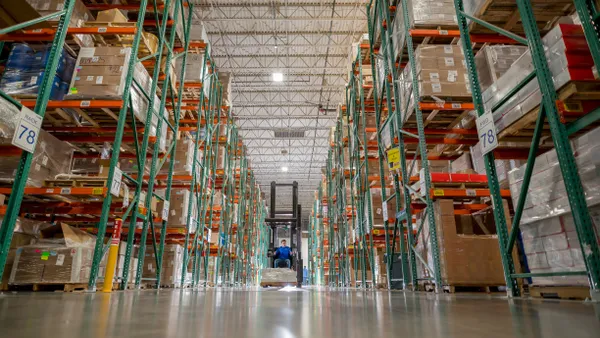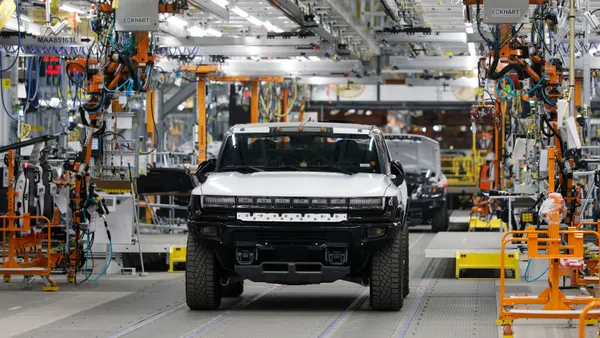Dive Brief:
- The use of RFID by a Turkish denim manufacturer resulted in reduced labor cost and product loss, according to a 2017 paper published in The International Journal of Advanced Manufacturing Technology.
- Researchers estimated the monthly savings added up to 5,454 euros ($6,059) for workforce, and 15,625 euros ($17,357) for product loss and penalty costs. The initial investment for the manufacturer, which produces two million denim products per year, was 312,233 euros ($346,852). (Though this could have changed since the paper was published as the technology is becoming less expensive.) The company was transitioning from a barcode system for tracking its work in progress inventory.
- Part of the research involved determining if RFID tags can survive the harsh denim product process, which involves abrasion, washing and baking at temperatures near 300 degrees Fahrenheit. Researchers tested silicone, plastic and epoxy tags, concluding the epoxy ones were easiest to connect to the denim and could survive the manufacturing process.

Dive Insight:
The savings resulting from reduced product loss will vary depending on any given organization's baseline for that particular issue. The report's benefit analysis estimated a product loss rate decrease of 50% to get an annual savings of 187,500 euros ($208,289).
"Decreasing rate of lost items is an important parameter for denim production because product loss and related penalty cost factors have a high proportion on the total process cost value," the paper concluded. The lost and faulty rate prior to the use of RFID was 2%; this was cut in half with RFID use.
The researchers also found RFID scanning required about half as many employees as barcode scanning. The factory needed 18 employees to handle barcode reading but only needed 10 for RFID scanning. The final cost comparison included the labor required to sew in the RFID tags and remove them before shipping.
Throughout the manufacturing process, the RFID-embedded denim would communicate with eight RFID readers throughout the factory to provide real-time location information.
Many large companies are already years into the use of RFID for inventory tracking. Target cited the technology for improving its cost management when it came to payroll and inventory in 2016. More recently, Nike has credited RFID for providing it with "the most complete view of our inventory that we have ever had," Nike CEO Mark Parker said this summer.
More organizations are starting to think about how this technology can be used to deal with product losses. This includes A-1 Packing Solutions, which filed a patent application earlier this month for a system that would use RFID tags on inventory to communicate with warehouse transportation equipment to help workers find misplaced inventory.
This story was first published in our weekly newsletter, Supply Chain Dive: Operations. Sign up here.















